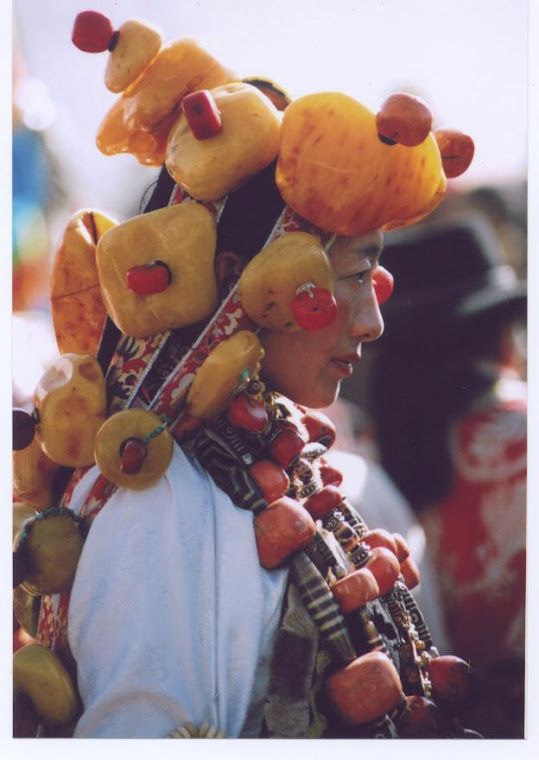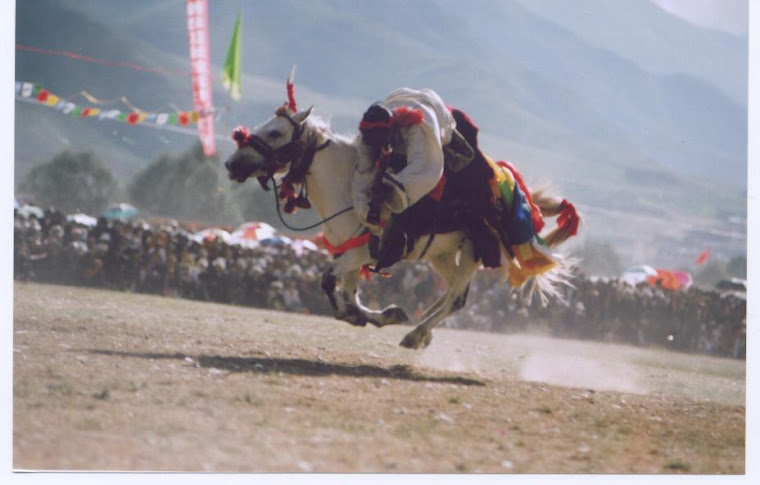
Tibet had pockets of Muslims entrenched within its borders although there is no documentary evidence on how Muslims first came to settle there. In fact, information on Tibetan Muslims in general itself is scarce. But the existence of Tibet appears to be known to the Muslim world from the earliest period of recorded history. Arab historians like Yaqut Hamawi, Ibn Khaldun and Tabari mention Tibet in their writings. In fact, Yaqut Hamawihas, in his book Muajumal Buldan (encyclopaedia of countries), refers to Tibet in three different ways Tabbat, Tibet and Tubbet.
During the reign of Umar bin Abdul Aziz (717-720) of the Persian Empire, it is believed that a delegation from Tibet and China requested him to send Islamic missionaries to their countries. Caliph Umar is said to have sent Salah bin Abdullah Hanafi to Tibet. The Abbasid rulers of Baghdad also maintained re1ations with Tibet in the eighth and the ninth centuries.
Kashmir and Eastern Turkestan were the nearest Islamic regions bordering Tibet. It is said that Muslim migrants from Kashmir and Ladakh areas first entered Tibet around 12th century. Gradually, marriages and social interaction led to an increase in the population until a sizable community came up around Lhasa, Tibet's capital. There was no large-scale conversion to Islam though. Thomas Arnold, in his book, The Preaching of Islam, published in the early part of this century says, "Islam has also been carried into Tibet proper by Kashmiri merchants. Settlements of such merchants are to be found in all the chief cities of Tibet: they marry Tibetan women, who often adopt the religion of their husbands..."
Tibetan Muslims trace their origin from immigrants from four main regions: China, Kashmir, Ladakh and Nepal. Islamic influence in Tibet also came from Persia and Turkestan.
Muslims are known as Khache among Tibetans. This appear to be because the earliest Muslim settlers to Tibet were from Kashmir which was known as Khache Yul to Tibetans.
The arrival of Muslims was followed by the construction of mosques in different parts of Tibet. There were four mosques in Lhasa, two in Shigatse and one in Tsethang. In recent years, one mosque in Lhasa has been renovated, with Tibetan Muslims from India sending religious inscriptions to it for use. Tibetan Muslims were mainly concentrated around the mosques that they constructed. These mosques were maintained well and were the centres of Muslim social life in Tibet.
Tibetan Muslims led a reasonably free life in a Buddhist environment. In fact, during the time of the fifth Dalai Lama, Tibetan Muslims received the following special privileges:
i) They were permitted to settle their affairs independently, according to the Shariat Laws. The government permitted the Muslim community to elect a five-man committee, known as 'Ponj' who looked after their interest. From among the Ponj, a leader - known as Mia to Muslims and Kbache Gopa - (Muslim headman) among non-Muslims - was elected. ii) Tibetan Muslims were free to set up commercial enterprises and were exempted from taxation. iii) Tibetan Muslims were also exempted from implementing the 'no meat rule' when such a restriction was imposed in Tibet every year during a holy Buddhist month. Muslims were also exempted from removing their caps to Buddhist priests during a period in a year when the priests held sway over the town. Muslims were also granted the Mina Dronbo (invitation to different communities) status to commemorate the assumption of spiritual and temporal authority by the fifth Dalai Lama.
In addition, Muslims had their own burial place. There were two cemeteries around Lhasa: one at Gyanda Linka about 12 km from Lhasa town and the other at Kygasha about 15 km away. A portion of Gyanda Linka was turned into a garden and this became the place where the Muslim community organised their major functions. Gyanda Linka is said to contain unmarked graves believed to be those of foreigners who came to preach Islam to Tibet. Kygasha was mainly used by Muslims of Chinese origin.
Tibetan Muslims confined themselves mainly to trade and commerce. Hardly any of them indulged in fanning. As the community grew, Madrasas (primary schools) were set up in which children were taught about Islam, the Koran and the method of offering namaz (prayers). Urdu language was also part of the curriculum. There were two such Madrasas in Lhasa and one in Shigatse.
After finishing their stuthes in these Madrasas, students were sent to India to join Islamic institutes of higher learning such as Darul-U1oom in Deoband, Nadwatul-U1ema in Lucknow and Jamia Millia Islamia in New Delhi. The annual report of Darul-U1oom for the year 1875 mention the presence of two foreign students there: a Burmese and a Tibetan. Jamia Millia Islamia received its first batch of Tibetan students in 1945.
In those days, transportation within Tibet was a problem. Students were sent along with Muslim merchants making their annuals trip to India. This took months as they had walk or ride on yaks for most of the way. Therefore, once the students got admitted to institution in India, they usually did not return to Tibet until the completion of a stage of their education.
Quite a few Tibetan Muslims have successfully completed their stuthes in India, with many being well versed in Arabic, Urdu and Persian. The most famous among them could be Faidhullah who undertook the ambitious task of translating into Tibetan Gulestan and Boastan, Persian poetry of Sheik Sadi. Faidhullah's is well known among Tibetans for his popular book aphorism Khache Phalu (few words of advices from a Muslim). Even today, Tibetans continue to quote from his book, (an English translation of Khache Phaluh as been done by Dr. Dawa Norbu and published by the Library of Tibetan Works & Archives).
Tibetan Muslims were able to preserve their community's identity while at the same time absorbing their traditional Tibetan social and cultural traditions. They elected a Ponj committee to look after their affairs. The Tibetan government approved the formation of this committee and gave it a free hand to undertake its activities and to decide on matters concerning the Tibetan Muslim community. Tibetan Muslims have also made significant contribution to Tibetan culture, particularly in the field of music. Nangma, a popular c1assica1 music of Tibet, is said to have been brought to Tibet by Tibetan Muslims. In fact, the very term Nangma is believed to be a corruption of the Urdu word Naghma meaning song. These high-pitched tilting songs, developed in Tibet around the turn of the Century, were a craze in Lhasa with musical hits by Acha Izzat, Bhai Akbar-la and Oulam Mehdi on the lips of almost everyone.
By Masood ButtTibetan BulletinJanuary - February 1994




















No comments:
Post a Comment